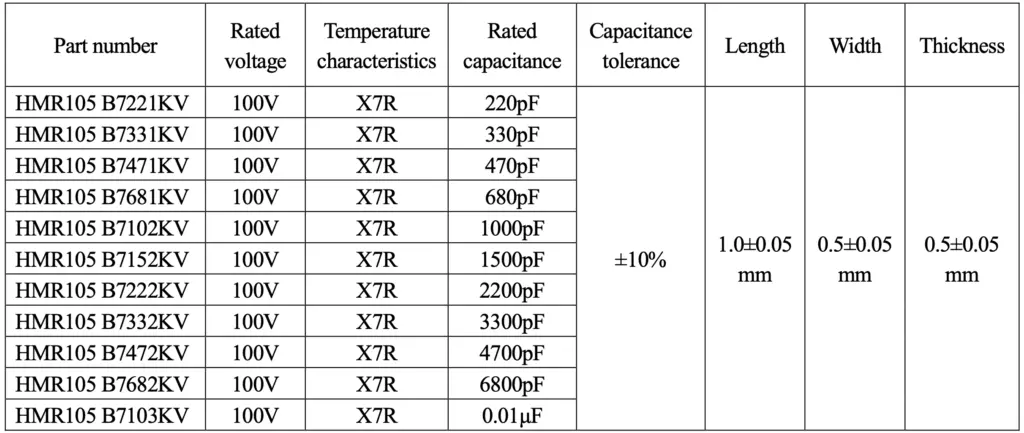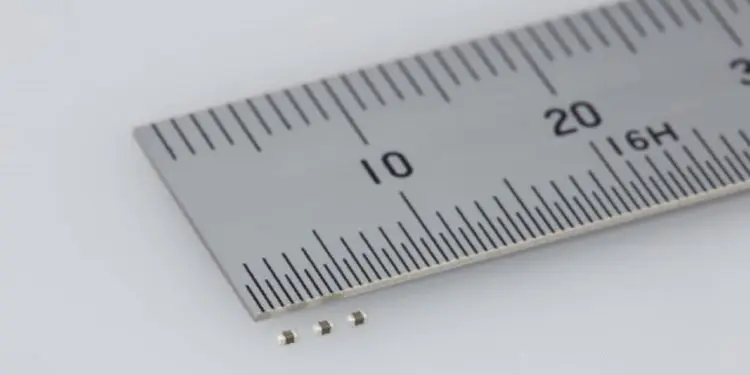TAIYO YUDEN CO., LTD. announced today the commercialization of 11 products, including the 1005-size multilayer ceramic capacitor HMR105 B7103KV (1.0 x 0.5 x 0.5 mm, with a rated voltage of 100 V and a capacitance of 0.01 μF).
We have sophisticated the materials and process technologies nurtured by us to improve rated voltage to 100 V compared to our conventional product UMR105 B7103KV (1.0 x 0.5 x 0.5 mm, with a rated voltage of 50 V and a capacitance of 0.01 μF), and achieve approximately a 75% reduction in size compared to our 1608-size (1.6 x 0.8 x 0.8 mm) conventional product HMR107 B7103KA (rated voltage of 100 V, capacitance of 0.01 μF). The product is compatible with AEC-Q200, a reliability test qualification standard for automotive passive components.
The products we launched today will be used for power line anti-noise parts that can be used in on- board devices for automotive power trains such as engines and transmissions.
Production of the multilayer ceramic capacitors commenced at the company’s Tamamura Plant (Tamamura-machi, Sawa-gun, Gunma Prefecture, Japan) from December 2019 at a production rate of ten million units per month, with a sample price of 5 yen per unit.
Technology Background
In recent years, electrification and electronification of automobiles have increasingly progressed in step with the proliferation of electric and hybrid vehicles. Under this situation, demands for smaller dimensions and larger capacity, together with high reliability, have also risen for multilayer ceramic capacitors that are used as automotive electronic parts.
EMC measures are required for such devices to remove external and internally generated noise to prevent malfunction, and the electronic components used inside must withstand high voltages. In addition, as devices increase in functionality and use higher-density packaging, smaller on-board multilayer ceramic capacitors are desired.
TAIYO YUDEN has increasingly expanded its automotive product lineup to realize compatibility between larger capacitance and high reliability in broader product sizes. With this commercialization, we have sophisticated our materials and process technologies to launch HMR105 B7103KV, for which the rated voltage has been improved to 100 V in the 1005 size.
TAIYO YUDEN will continue to further expand our product lineup to respond to needs from markets requiring high reliability.
■Application
Power line anti-noise parts that can be used in on-board devices for automotive power trains such as engines and transmissions
■Characteristics

































